![]()
Cattleya jongheana expedition
 |
Marcelo Rodrigues |
Cattleya jongheana or Laelia jongheana is a very ornamental species that previously belonged to the genus Hadrolaelia, chosen for the absence of floral spathes (the flower is protected by the leaves at the time of anthesis). The trip (For conservation purposes, the exact location of the shipment will be omitted) |
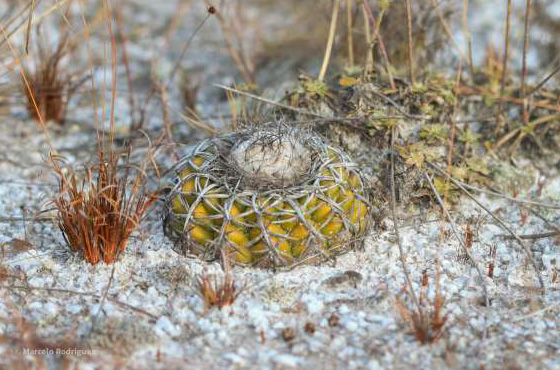 Disocactus sp. |
We arrived in the region of Vale do Jequitinhonha on a sunny morning in August, we initially went to see a known habitat of Constantia cristinae, which was in full bloom. The place was easily accessible and the small plants vegetated on the side of a stone block. They are very small plants and the flowers are tiny. The contrast of the lilac tepals with the yellow verrucosities of the lip form a very beautiful effect. |
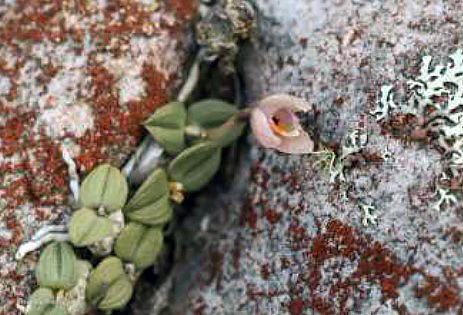 |
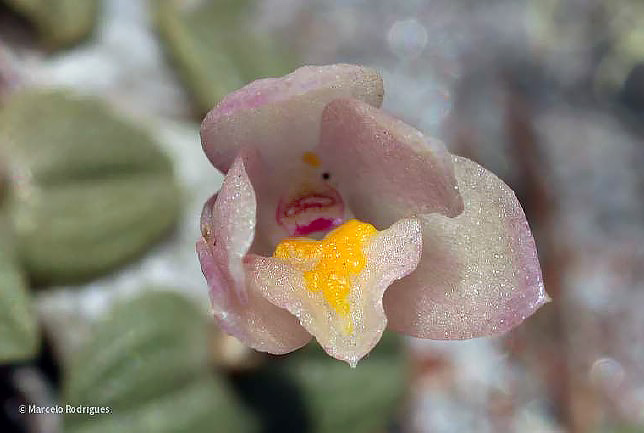 |
It was interesting to observe that some flowers had no lip or part of it devoured, probably by wasps or native bees (probably pollinators). |
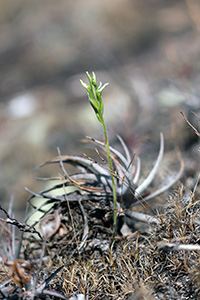 |
A little further on, we saw a terrestrial orchid in bloom, which we later found to be Veyretia aphylla. |
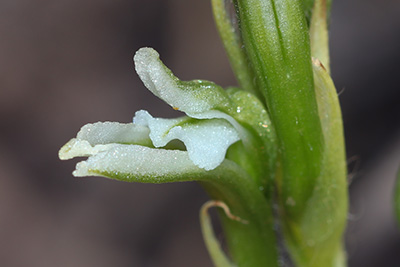 Veyretia aphila |
We continued on for a few more kilometers and stopped at another location to see another larger population of Constantia. To get to the stone blocks where they were, we had to cross a partially flooded area. |
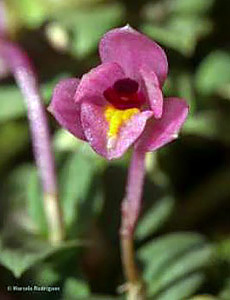 |
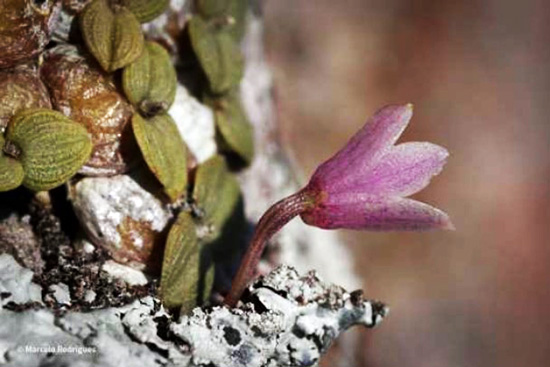 |
On the way we saw several specimens of Cyrtopodium paludicola practically vegetating in water, a fact that caused me some surprise, as I believed that the terrestrial species of this genus were exclusively from drier substrates, as they are normally found. We also saw a small population of Gomesa hydrophila and some Habenaria cf repens in bloom, all vegetating in waterlogged soil. The crossing was expensive and we decided to abort the mission and returned to the car frustrated and with our shoes completely soaked. |
|
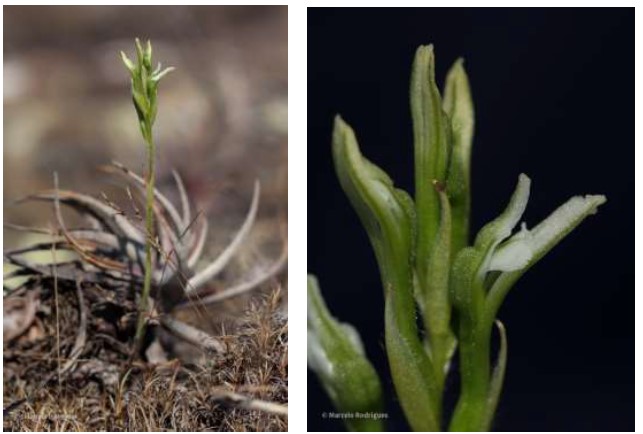 |
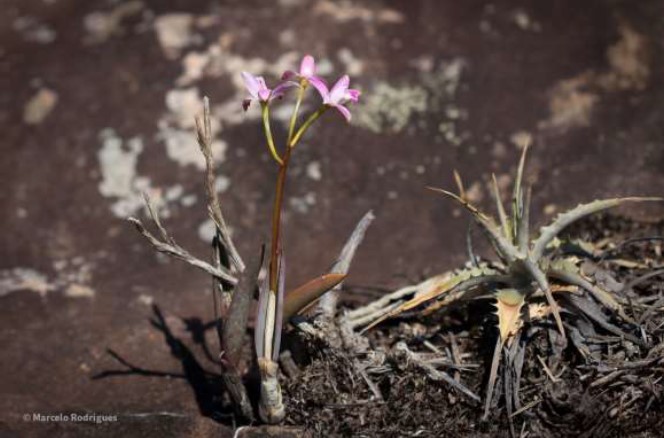 |
We finally arrived at our final destination and started the climb in the early afternoon. The path we followed to climb was, once, a route of drovers in the distant past. Occasionally we found traces of stone walls and sidewalks that marked the path to be followed. On the way we met a rider who was descending the mountain on his bay horse that was pulling a mule when he was still young, he was Sr. Altamiro, a genuine countryman of great pride, the visible marks of a suffering life were overshadowed by his happy smile. He carried his few things in two saddlebags made of animal hide and hand sewn with strips of the same material. Altamiro told us that he had spent a few days at his ranch in the sertão of the mountains, where he has some animals loose in the natural savannahs that are abundant at the top of the mountains. This is a common practice in many places where natural grass vegetation is abundant, a practice already prohibited in most protected areas. |
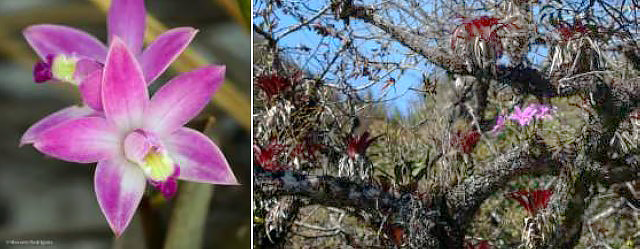 |
I asked if he knew of an orchid with large pink flowers that lived on trees and possibly existed in that region. He analyzed my description and replied that he knew of two, one “laced” that was high up in the trees and another with fallen bunches, which was in the lower parts (we couldn't find out which one this second plant was). |
He explained that they were located in patches of weeds wedged along streams or close to waterlogged areas. He also said that he had seen some flowering plants a few days ago. At that moment the spirits were already in the heights and the hope ascended in our minds. We talked there for a while longer and said goodbye, with some regret, as the conversation was extremely pleasant. The afternoon was already falling when we finally reached a place to stay overnight. It was a flat area close to a precipice, where we had a privileged view of the Jequitinhonha Valley. It was very lucky that we found such a special place, almost all the way we walked was through tall forest and without a good place to sleep. Around the camp we saw some very interesting araceae as Thaumatophyllum adamantinum and several specimens of Anthurium cf afine. The night was very lively, we talked and had fun until late. |
|
We woke up very early to the sound of a maned wolf (lobo guará) roaring in the valley just below our camp. Despite being very close, it was not possible to see the animal.
|
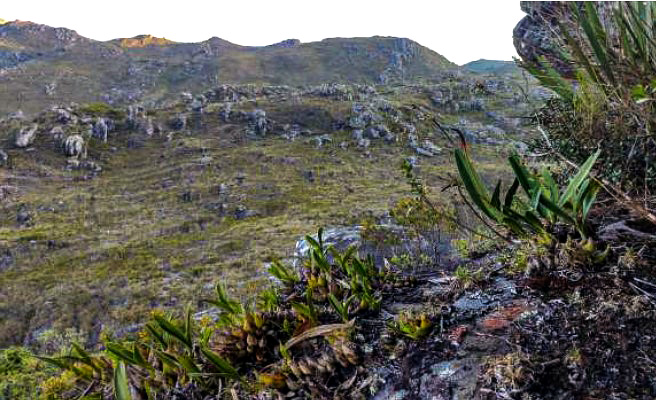 Prosthechea sp. e Anthurium sp. Prosthechea sp. e Anthurium sp. |
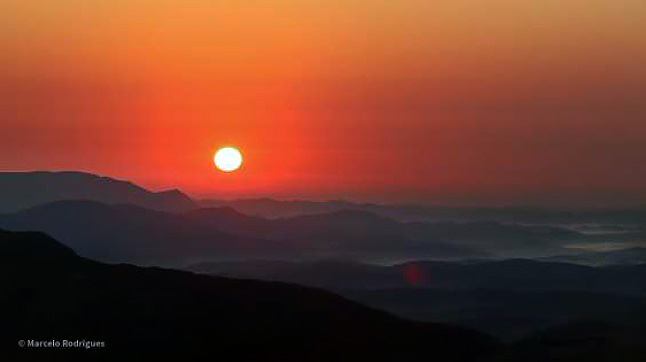 Dawn of the day seen from the camp |
The Jequitinhonha Valley is famous for its aridity and poverty, but in that place the abundance of water was surprising. Of all the places I've been visiting in the Espinhaço chain, this is, without a doubt, the wettest place and with the greatest availability of water.
It was an unforgettable sight. At that moment, we let the other members know on the radio, who, without delay, came up to meet us.
A unique view. |
In that riparian forest we still find Prescottia stachyodes, Sophronitis brevipedunculata and an epiphytic Bifrenaria. From there, we continued up the mountain range, on the way we saw small populations of a small Cattleya (hoffmansegella) with yellow flower buds (probably Cattleya bradei) and a Zygopetalum maculatum with an almost white lip. Our goal had already been achieved, but I was still hoping to see a Cattleya jongheana, flowering over Vellozia. |
We arrived in an open area and saw from afar large pink flowers on a large Vellozia two meters or more in height.
|
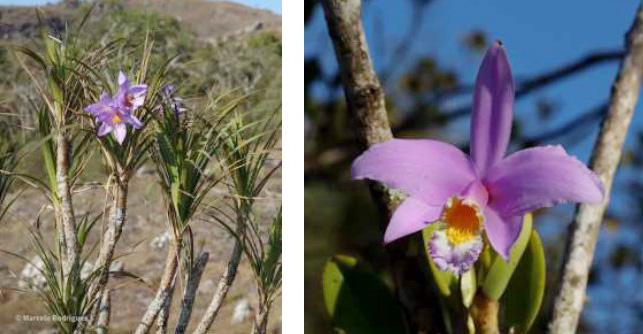 Vellozia glabr Vellozia glabr |
We continue visiting the habitats. There was not much species richness, but we still saw some specimens of Oncidium forbesii that, even without flower, can be easily differentiated from its congeners as it usually has only one apical leaf, unlike the other species, which normally has two leaves at the apex of the pseudobulb . In the lower parts of the forest there was a species of Grobyia sp. with capsules already well formed and in the more open areas we can see several examples of Begonia grisea with its rustic aspect. The leaves are velvety and grayish, an effect caused by the starry trichomes that are abundant in the leaf blade. We could still see some specimens of Gomesa ramosa with its yellow flower panicles extended over the valley. |
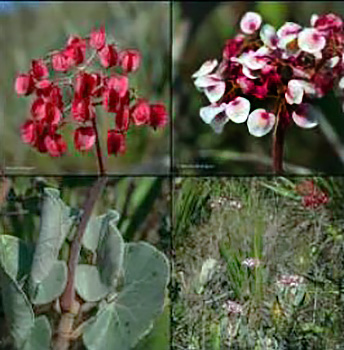 Begonia grisea |
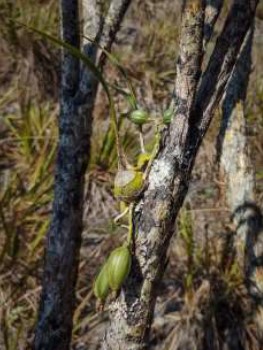 Grobya sp. |
The descent was cruel, her knees ached from the unevenness of the terrain. We were all very tired from two days of long walks in the mountains of Minas Gerais. Another successful expedition with surprising encounters and visions of this unique ecosystem called Campo Rupestre. |
|